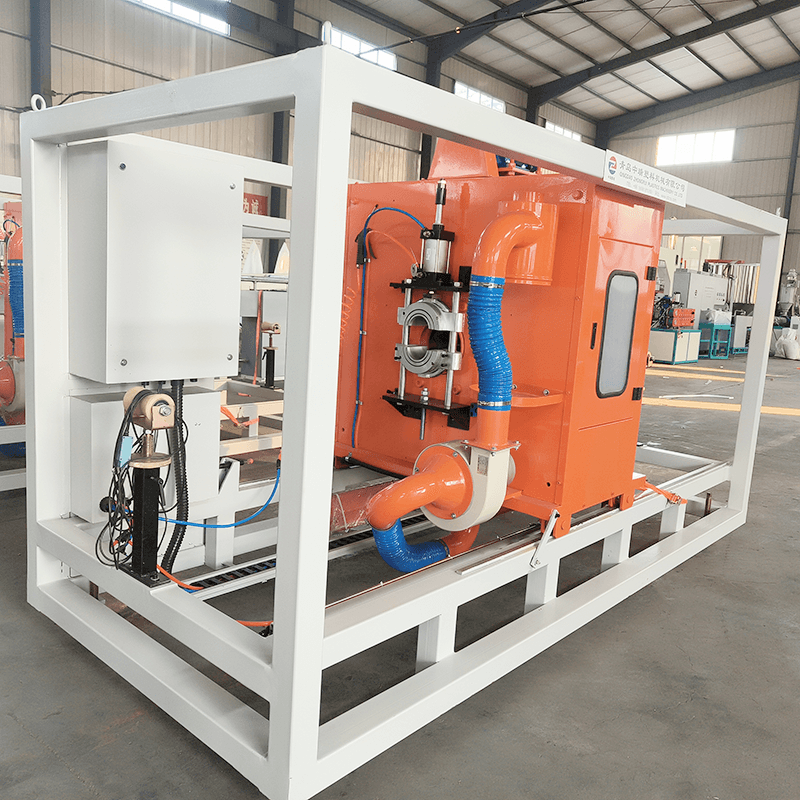
Introduction
Design changes are a critical aspect of the manufacturing industry, directly influencing the efficiency and quality of production processes. In the context of profile production, alterations in design can significantly impact the operational workflow, material selection, and overall output. Understanding how these changes affect the Plastic Profile Production Line is essential for manufacturers aiming to optimize their processes and remain competitive in a dynamic market.
Understanding Profile Production Processes
Profile production involves the extrusion of plastic materials to create continuous profiles with uniform cross-sections. These profiles are used extensively in various industries, including construction, automotive, and consumer goods. The production process typically includes raw material preparation, extrusion, calibration, cooling, and cutting. Each stage must be precisely controlled to ensure the final product meets the desired specifications.
Materials and Extrusion Techniques
The choice of materials plays a pivotal role in profile production. Common materials include PVC, polyethylene, and polypropylene. The extrusion technique must be adapted to the specific properties of these materials to achieve optimal results. For instance, PVC requires careful temperature control to prevent degradation during processing.
Quality Control Measures
Quality control is integral throughout the production process. Implementing rigorous inspection protocols ensures that dimensional accuracy and surface finish meet industry standards. Advanced technologies like laser measuring systems and real-time monitoring software are increasingly used to enhance quality assurance.
The Role of Design in Profile Production
Design serves as the blueprint for production, dictating the shape, dimensions, and functional characteristics of the profile. It influences tooling design, material selection, and processing parameters. Effective design considers manufacturability, cost-efficiency, and end-use requirements.
Tooling and Die Design
Tooling is a critical component that shapes the molten plastic into the desired profile. Die design must account for material flow, thermal expansion, and pressure variations. Advanced simulation tools help engineers optimize die geometry to minimize defects and improve product consistency.
Impact on Material Flow and Cooling
Design changes can alter the material flow within the die, affecting the cooling rate and crystallization of the polymer. Uniform cooling is essential to prevent warping and ensure structural integrity. Modifications in design may necessitate adjustments in cooling system configurations to maintain product quality.
Impact of Design Changes on Production Efficiency
Design changes, while often necessary for product improvement, can disrupt established production processes. They can introduce new variables that require recalibration of equipment and retraining of personnel. Understanding these impacts is crucial for mitigating potential inefficiencies.
Operational Adjustments
Adjustments to machine settings, such as extrusion temperature, screw speed, and puller speed, may be required to accommodate design modifications. These changes can affect cycle times and throughput. Manufacturers must carefully plan these adjustments to minimize downtime and maintain productivity.
Cost Implications
Design changes can lead to increased costs due to the need for new tooling, additional material testing, and potential waste from trial runs. A study by the Manufacturing Institute found that up to 70% of production costs are determined during the design phase, highlighting the financial impact of late-stage design alterations.
Case Studies of Design Changes in Profile Production
Examining real-world examples provides insight into how design changes affect production processes. Companies that have navigated these challenges offer valuable lessons on effective management strategies.
Case Study 1: Updating a Window Profile Design
A window manufacturer implemented a design change to improve thermal efficiency. The new profile required a complex geometry, necessitating the development of specialized tooling. The initial production runs experienced increased scrap rates due to calibration issues. By collaborating closely with their tooling supplier and adjusting processing parameters, the company successfully optimized production within six months.
Case Study 2: Switching Materials for Sustainability
Another manufacturer sought to replace PVC with a biodegradable material for environmental reasons. This change significantly impacted the extrusion process, as the new material had different thermal and rheological properties. Extensive trials were conducted to adjust the extrusion temperature profile and screw design. The transition led to a 15% increase in production costs but aligned the company with sustainability goals, opening new market opportunities.
Strategies for Managing Design Changes
Effective management of design changes involves proactive planning and cross-functional collaboration. Employing strategies to anticipate and mitigate impacts can lead to smoother transitions and sustained production efficiency.
Cross-Departmental Collaboration
Involving all stakeholders, including design engineers, production managers, and quality assurance teams, ensures that all perspectives are considered. This collaborative approach helps identify potential production challenges early in the design change process.
Investing in Flexible Technology
Investing in adaptable equipment, like modular extrusion lines, can reduce the downtime associated with design changes. Advanced machinery capable of quick changeovers allows manufacturers to respond swiftly to design modifications without significant productivity losses.
Continuous Training and Development
Ensuring that staff are well-trained in new processes and technologies is essential. Ongoing education programs enhance the workforce's ability to adapt to changes efficiently. Skilled operators can troubleshoot issues more effectively, maintaining quality and throughput.
Conclusion
Design changes are inevitable in the pursuit of innovation and improvement within the profile production industry. Recognizing how these changes impact production processes enables manufacturers to implement strategies that minimize disruptions. By focusing on collaboration, investing in flexible technologies, and prioritizing workforce development, companies can navigate design alterations effectively. Embracing these practices not only maintains efficiency but also positions manufacturers to capitalize on new opportunities in the market.
For manufacturers seeking to enhance their production capabilities, understanding the nuances of how design impacts the Plastic Profile Production Line is crucial. By staying informed and adaptable, they can ensure sustained success in a competitive industry.




























 +86-18561886575 (Mr.Wu)
+86-18561886575 (Mr.Wu) 
 +8618561886575
+8618561886575 238 Yangzhou West Road, Jiaozhou City, Qingdao City, Shandong Province
238 Yangzhou West Road, Jiaozhou City, Qingdao City, Shandong Province